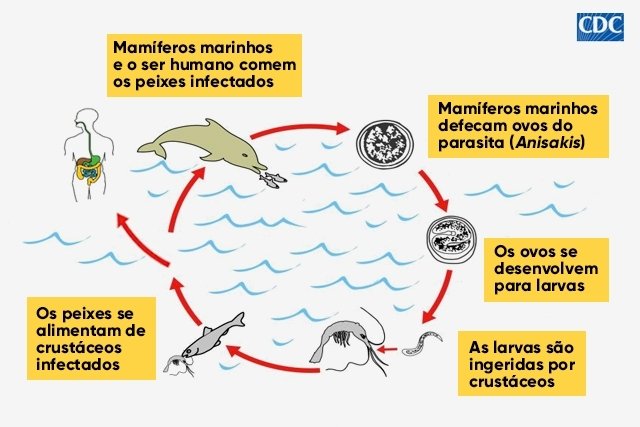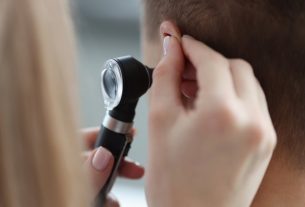Anisakiasis is an infection caused by a parasite of the genus Anisakis sp., which is mainly found in seafood such as crustaceans, squid and contaminated fish. For this reason, this type of infection is more common in cultures where there is a habit of eating raw food, such as sushi, for example.
When eating food contaminated by this parasite, the larvae can reach the stomach and intestine, resulting in symptoms such as severe abdominal pain, fever, nausea and general malaise that can appear a few hours after consuming sushi, for example. Therefore, if symptoms of infection appear after eating raw food, it is advisable to consult a general practitioner to identify whether this parasite is present and begin appropriate treatment.
See a quick summary of this type of infection and other diseases caused by parasites:
Main symptoms
Symptoms of infection by Anisakis sp. may appear a few hours after consuming the infected food, the main ones being:
- Severe abdominal pain;
- Nausea and vomiting;
- Belly swelling;
- Diarrhea;
- Presence of blood in the stool;
- Fever below 39ºC, constant.
In addition, some people may also develop symptoms typical of allergic reactions, such as itchy and red skin, swelling of the face or difficulty breathing.
How to confirm the diagnosis
A doctor may suspect anisakiasis after evaluating each person’s symptoms and history, especially if the person has consumed raw fish or sushi. However, the only way to confirm the diagnosis is to perform an endoscopy to observe the presence of the larva inside the stomach or in the initial portion of the intestine.
During endoscopy, if larvae are identified, the doctor can remove them using a special device that reaches the stomach through the tube used during endoscopy.
How the treatment is carried out
In most cases, larval infection Anisakis sp. is treated during endoscopy. To do this, the doctor, after identifying the parasite, inserts a special device through the endoscope tube in order to reach the stomach and remove the larvae.
However, when this is not possible or when the larva has already spread to the intestine, it may be necessary to take a dewormer, called Albendazole, for 3 to 5 days, to kill the parasite and eliminate it in the feces. In many cases, the body also ends up eliminating the larvae naturally and, therefore, many people may not even know that they have already been infected.
In more serious cases, where anisakiasis continues to worsen after these two treatments, surgery may be advised to remove each larva individually.
Biological cycle of anisakiasis

Anisakiasis is caused by the larva Anisakis sp. and its life cycle begins when some aquatic mammals, such as infected whales or sea lions, defecate in the sea, releasing eggs that end up developing and forming new larvae. These larvae are then ingested by crustaceans, which end up being eaten by squid and fish, also becoming infected.
When these fish are caught, the larvae continue to grow in their flesh and, therefore, if they are eaten raw, the larvae will start to live inside the stomach and intestine of the person who ate the infected fish flesh.
How to avoid anisakiase
The best way to avoid infection with this type of larva is to cook fish and squid at temperatures above 65º C. However, when it is necessary to consume raw fish, such as in sushi, it is recommended to take some storage precautions.
To store fish before eating, you must freeze it, following the following guidelines:
- Freeze and store at -20º C: up to 7 dais;
- Freeze and store at -35º C: for less than 15 hours;
- Freeze at -35ºC and store at -20ºC: up to 25 hours.
The type of fish most affected by this larva is generally salmon, squid, cod, herring, mackerel, halibut and anchovies.
Furthermore, the larva is normally more than 1 cm long and, therefore, can be seen in the fish flesh. Therefore, if you are eating at a sushi restaurant, for example, you should pay attention to the pieces before eating.




